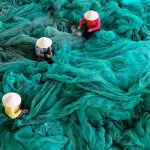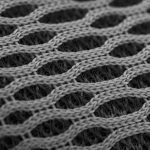You may have tried various methods to stiffen rope, only to find temporary results. Mastering the art of permanently stiffening rope is crucial for many applications.
In this guide, you will learn five proven techniques to achieve lasting stiffness. From heat treatment to natural fiber hardening, each method is carefully explained to help you achieve mastery.
Whether you're a seasoned sailor or a DIY enthusiast, these techniques will elevate your rope stiffening skills to the next level.
By following these clear and engaging methods, you'll be able to ensure that your rope maintains its stiffness for the long term, meeting your specific needs with confidence and precision.
Key Takeaways
- Heat treatment method, such as annealing, can permanently stiffen rope by heating it to a specific temperature and cooling it slowly.
- Chemical stiffening techniques involve selecting appropriate chemical agents based on rope material, intended use, and environmental impact.
- Rope coating processes, such as wax application or polymer infusion, can increase stiffness and durability based on specific application requirements.
- Mechanical compression method can improve rope strength, rigidity, and resistance to stretching or breaking by subjecting it to intense pressure.
Heat Treatment Method
You can permanently stiffen rope using the heat treatment method. This process involves heating the rope to a specific temperature and then cooling it down slowly to alter its molecular structure. The rope annealing process, as it's called, offers several benefits, including increased stiffness and improved resistance to wear and tear. However, there are drawbacks to consider as well.
While the rope becomes stiffer, it may also become more brittle, which can affect its overall durability.
Different heat treatment temperatures have varying effects on rope durability. A lower temperature might result in a slightly stiffened rope, while a higher temperature could make it significantly stiffer. Finding the right balance is crucial to achieve the desired level of stiffness without compromising the rope's strength.
It's important to understand the specific heat treatment requirements for different types of rope materials to ensure optimal results.
In mastering the art of permanently stiffening rope through heat treatment, it's essential to carefully consider the annealing process, weighing its benefits and drawbacks, and understanding the effects of different heat treatment temperatures on rope durability.
Chemical Stiffening Technique
When using the chemical stiffening technique, it's important to carefully select the appropriate chemical agent for treating the rope. Consider factors such as the type of rope material, intended use, and environmental impact. Some chemical agents may have a more significant impact on the environment than others, so it's crucial to choose one that aligns with your sustainability goals.
Safety considerations are paramount when working with chemical agents. Always wear appropriate personal protective equipment, such as gloves and goggles, and ensure proper ventilation in the treatment area to minimize exposure to potentially harmful fumes. Additionally, carefully follow the manufacturer's instructions for the chemical agent to prevent accidents and adverse health effects.
Evaluate the environmental impact of the chemical stiffening technique and prioritize using agents that have minimal long-term effects. Prioritize safety by handling and storing chemical agents properly to prevent spills and contamination.
Rope Coating Process
To continue treating the rope for stiffness, consider employing the rope coating process with a suitable compound to enhance its rigidity and durability. One effective method for rope coating is wax application. This involves heating the rope and then applying a suitable wax compound to it. The heat allows the wax to penetrate the fibers, resulting in a stiffer and more durable rope. Wax coating is particularly beneficial for natural fiber ropes such as cotton or hemp.
Another advanced technique for rope coating is polymer infusion. This process involves immersing the rope in a polymer solution and allowing it to fully absorb the material. Once the rope is removed from the solution, the polymer is cured, creating a hardened coating around the individual fibers. This method significantly increases the rope's stiffness and resistance to abrasion, making it ideal for heavy-duty applications.
Both wax application and polymer infusion can effectively stiffen ropes, providing enhanced rigidity and durability for various purposes. When selecting a coating method, consider the specific requirements of your application to determine the most suitable approach for achieving the desired level of stiffness.
Mechanical Compression Method
Employing a mechanical compression method is another effective approach to further enhancing the stiffness of the rope. This method involves subjecting the rope to intense pressure, which helps to compact the fibers and improve its overall strength and rigidity.
Here are some key benefits and considerations of using the mechanical compression method to stiffen rope:
- Enhanced Rope Strength: Mechanical compression effectively increases the rope's tensile strength, making it more durable and resistant to stretching or breaking under heavy loads.
- Improved Abrasion Resistance: The compressed fibers result in a smoother surface, reducing friction and enhancing the rope's ability to withstand wear and tear.
- Maintained Flexibility: Despite the increased stiffness, the mechanical compression method allows the rope to retain a degree of flexibility, ensuring it remains manageable and versatile for various applications.
- Precise Control: This method offers the advantage of allowing precise control over the level of stiffness desired, making it suitable for customizing ropes for specific uses.
Natural Fiber Hardening Approach
After employing the mechanical compression method to enhance the stiffness of the rope, you can also consider utilizing a natural fiber hardening approach to further improve its rigidity and durability.
One effective method is treating the rope with a vinegar solution. Soak the rope in a mixture of water and vinegar, using approximately one cup of vinegar per gallon of water. Allow the rope to sit in the solution for several hours, ensuring that the vinegar thoroughly penetrates the fibers. After soaking, rinse the rope with clean water to remove excess vinegar and then hang it to dry in the sun.
Sun drying is a crucial step in the natural fiber hardening process. The UV rays from the sun help to break down the natural fibers in the rope, making them stiffer and more rigid. It's important to ensure that the rope is fully dried, as any remaining moisture can lead to weakened fibers.
Once dried, the rope will have noticeably improved stiffness and durability, making it better suited for applications that require a taut and rigid rope.
Frequently Asked Questions
Can I Use a Combination of These Methods to Achieve a Stronger Stiffness in the Rope?
Yes, you can achieve a stronger stiffness in the rope by combining these methods. This will enhance rope flexibility and durability. Experiment with different techniques to find the best combination for your specific needs.
Are There Any Environmental Concerns or Safety Precautions to Consider When Using the Chemical Stiffening Technique?
When using the chemical stiffening technique, it's crucial to consider the environmental impact and safety precautions. Ensure proper ventilation and protective gear when handling chemicals. Dispose of waste responsibly to minimize environmental impact and prevent safety hazards.
How Can I Maintain the Flexibility of the Rope While Still Achieving the Desired Stiffness?
To maintain flexibility and achieve the desired stiffness in the rope, you can consider using a combination of techniques such as adjusting the tension and applying specific stiffening agents in a controlled manner. Be mindful of safety precautions and environmental impact.
Is There a Specific Type of Rope or Material That Works Best With Each of These Methods?
When comparing rope materials for stiffness, consider natural fibers like manila for traditional methods and synthetic ropes for modern techniques. The best stiffening methods depend on your specific application and desired level of stiffness.
Are There Any Long-Term Effects on the Rope's Durability and Strength After Using These Stiffening Methods?
After stiffening rope long-term, the durability and strength may be affected. The stiffness results are influenced by the method and material used. It's essential to consider these effects to ensure the rope's integrity over time.
- Tetron Fabric for Furniture: Style and Durability Guide - June 18, 2025
- Tetron Fabric for Industrial Safety: Applications and Benefits - June 18, 2025
- Tetron Fabric for Medical Textiles: Hygiene and Safety Standards - June 18, 2025




